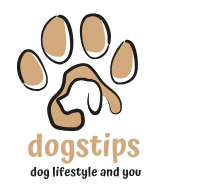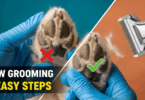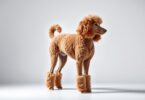If you’ve ever shared your home with a German Shepherd, you know the struggle: tufts of fur clinging to furniture, drifting across floors, and decorating dark clothes like seasonal confetti. While their loyalty and intelligence make them beloved companions, their shedding can feel overwhelming. Understanding why it happens—and how to manage it—turns frustration into confidence.
These dogs have a double coat—a dense undercoat paired with a medium-length outer layer. This design protects them year-round but also means shedding never fully stops. Twice annually, during spring and fall, they “blow” their undercoat. This seasonal surge leaves clumps of hair that test even the most patient pet owners.
Regular grooming is non-negotiable. Brushing three times weekly reduces loose fur and distributes skin oils. Yet shedding isn’t just about mess management. Sudden hair loss or skin irritation could signal allergies, parasites, or dietary gaps. Knowing your dog’s normal patterns helps spot problems early.
This guide explores coat science, grooming tools, and nutrition tips to keep shedding manageable. You’ll learn why their fur appears silkier when long and how to create a care routine that works for both of you. Let’s simplify life with your shedding companion.
Understanding the German Shepherd’s Double Coat
Ever wonder why your furry friend leaves so much hair around? It’s all in the layers. The breed’s coat isn’t just fur—it’s a two-part system designed for adaptability. Each layer serves distinct roles, from insulation to weatherproofing, which directly impacts shedding patterns.
Two Layers, One Purpose
The outer layer, or guard hairs, repels dirt and moisture. Beneath lies a dense undercoat that traps warmth in winter and releases heat in summer. This combination acts like built-in climate control, keeping the dog comfortable year-round.
Seasonal Shifts and Shedding Peaks
Twice yearly—usually spring and fall—the undercoat “blows out” to adjust to temperature changes. Fall shedding prepares for winter insulation, while spring shedding lightens the load for summer. Tools like an undercoat rake become essential during these phases to remove loose fur without damaging the protective top layer.
Skin Health and Coat Vitality
Regular brushing with a slicker brush does more than reduce shedding. It stimulates blood flow, spreads natural oils, and reveals skin issues early. A dull coat or excessive shedding outside seasonal norms might signal nutritional gaps or allergies needing veterinary attention.
Do German Shepherds Shed: What You Need to Know
Noticing clumps of fur around your home? While some shedding is expected, understanding the line between natural cycles and potential problems keeps your companion comfortable. Monitoring changes in hair loss patterns helps you act quickly if issues arise.
Normal Shedding Patterns vs. Excessive Hair Loss
Healthy coats shed moderately year-round, with heavier periods during seasonal transitions. You’ll find loose hairs on brushes, furniture, or floors—but no bald patches. Daily brushing helps remove loose fur before it spreads.
Excessive shedding shows as thinning areas, visible skin, or clumps falling out without pressure. If your dog’s coat feels brittle or you spot redness, it’s time to investigate. Parasites, stress, or hormonal imbalances often trigger abnormal hair loss.
Identifying Abnormal Skin and Coat Issues
A healthy coat lies flat with a slight sheen. Skin should appear clean and pale pink. Flaky patches, persistent itching, or foul odors signal trouble.
Allergies and poor nutrition frequently cause coat problems. Omega-3 supplements or dietary adjustments may help, but consult a vet if symptoms last over a week. Early intervention prevents minor issues from escalating.
Regular grooming sessions let you spot changes quickly. Pair brushing with gentle skin checks—especially behind ears and under legs. This routine strengthens your bond while safeguarding their health.
Effective Grooming Tools and Techniques
Mastering coat care transforms grooming from a chore to a bonding ritual. The right tools and methods keep shedding under control while promoting skin health. Let’s break down the essentials for maintaining that signature thick coat.
Brushing Methods with Undercoat Rake and Slicker Brush
Start with an undercoat rake to tackle dense fur. Glide it gently through the coat in the direction of hair growth, focusing on areas like the chest and hindquarters. This tool lifts dead undercoat without pulling healthy guard hairs.
Follow with a slicker brush to smooth the topcoat. Short, angled strokes remove loose strands and distribute natural oils. For best results, brush three times weekly—more often during seasonal shedding peaks.
Bathing and Drying Best Practices
Bathe your dog every 3-4 months using oatmeal-based shampoo. Overwashing strips protective oils, but occasional baths soften dead hair for easier removal. Always rinse thoroughly to prevent residue buildup.
High-velocity dryers work wonders post-bath. The airflow lifts trapped fur from both coat layers. Combine this with a final brush session to catch remaining loose hairs. Quality tools last longer—look for stainless steel rakes and rubber-bristled brushes.
Diet, Supplements, and Their Impact on Shedding
Nutrition forms the foundation of a vibrant coat and healthy skin. What your dog eats directly influences hair strength, growth cycles, and shedding intensity. A balanced diet rich in essential nutrients helps minimize excessive fur loss while promoting overall wellness.
Choosing a Healthy Diet for Skin and Coat
High-quality dog foods formulated for sensitive skin often contain key ingredients like salmon, sweet potatoes, and flaxseed. These provide proteins for hair structure and antioxidants to combat inflammation. Look for options labeled “complete and balanced” by AAFCO to ensure nutritional adequacy.
Foods with omega-3 and omega-6 fatty acids support skin hydration. Chicken meal or turkey-based recipes work well for many dogs. Always transition diets gradually over 7-10 days to avoid digestive upset.
Benefits of Omega Oils and Dietary Supplements
Fish oil supplements are a game-changer for reducing shedding. They strengthen hair follicles and improve coat shine. For picky eaters, try mixing liquid omega blends into meals or using chewable tablets.
Some owners find success with adding olive oil to meals for extra fatty acids. Always consult your vet before introducing new supplements—they can recommend proper dosages based on weight and health history.
Remember: consistency matters. Pair a nutrient-rich diet with regular grooming to manage loose hair effectively at home. Small dietary tweaks often yield noticeable improvements in coat quality over 6-8 weeks.
Seasonal Shedding and Environmental Influences
Seasonal shifts bring more than just weather changes for double-coated breeds. Twice yearly, these dogs undergo dramatic coat transitions driven by temperature and daylight variations. Understanding these natural cycles helps owners prepare effectively while maintaining household harmony.
Preparing for Fall and Spring Coat Blowing
As days shorten in fall, cooler temperatures signal the undercoat to thicken. Spring’s longer daylight hours trigger the opposite response—shedding winter insulation. This biological process ensures optimal comfort year-round but creates temporary fur surges.
Increase brushing frequency during these 3-4 week periods. Daily sessions with an undercoat rake prevent matting and redirect loose hairs into trash bins instead of carpets. Many owners schedule deep-cleaning routines before peak shedding seasons to stay ahead of the fur tide.
Maintaining a Clean Home Environment
Strategic cleaning minimizes hair accumulation. Robot vacuums programmed for daily runs capture surface fur, while washable couch covers protect furniture. Air purifiers with HEPA filters reduce airborne dander during heavy shedding months.
Keep grooming tools in multiple rooms for quick touch-ups. A rubber grooming mitt works wonders on clothing and upholstery. Remember: consistency beats intensity. Ten-minute daily cleanups prove more manageable than weekend-long marathons.
Weather changes impact coat health beyond shedding. Humidity levels affect skin moisture, while indoor heating dries out fur. Adjust brushing techniques and hydration strategies as seasons shift to support skin and coat resilience.
Professional Grooming and Veterinary Consultation
Managing a thick-coated companion requires teamwork between home care and professional expertise. While daily brushing tackles routine shedding, certain situations demand specialized skills. Knowing when to involve professionals protects your pet’s health and simplifies maintenance.
When Professional Groomers Shine
Mobile groomers become invaluable during seasonal coat transitions or for dogs stressed by salon visits. These experts use tools like de-shedding blades and high-velocity dryers to remove up to 90% of loose fur in one session. They also trim paw pads and clean ears—areas owners often overlook.
Schedule professional grooming every 8-12 weeks for optimal results. Busy seasons like spring shedding may require more frequent appointments. A trusted groomer tailors their approach to your dog’s coat texture and lifestyle needs.
Signals for Veterinary Attention
Persistent scratching, bald patches, or crusty skin warrant immediate vet checks. These symptoms often indicate allergies, infections, or thyroid issues. Blood tests or skin scrapings help pinpoint causes invisible to the naked eye.
Vets also assess nutritional imbalances affecting coat quality. They might recommend prescription diets or supplements if standard options fail. Annual check-ups catch problems early, especially for senior dogs with changing grooming requirements.
Combining pro grooming with veterinary care creates a safety net for your pet. Share observations about shedding patterns during vet visits—these details guide diagnostic decisions. Together, these partnerships keep your dog comfortable and your home fur-manageable.
Final Insights for a Happy, Well-Groomed German Shepherd
Living with these loyal companions means embracing their natural shedding patterns. A consistent care routine transforms fur management from overwhelming to manageable. Focus on three pillars: regular brushing with quality tools like an undercoat rake, nutrient-rich meals packed with omega oils, and seasonal adjustments to your cleaning schedule.
Proactive grooming strengthens the bond between you and your dog while maintaining coat health. Pair weekly brushing sessions with monthly baths using gentle shampoo. During spring and fall shedding peaks, increase brushing frequency to catch loose hair before it spreads.
Monitor skin condition and coat texture during grooming. Sudden changes like dryness or bald patches warrant a vet visit. Remember—seasonal shedding is normal, but persistent issues often signal dietary gaps or allergies needing professional attention.
With the right tools and knowledge, you’ll keep your home cleaner and your companion comfortable. Schedule annual check-ups, invest in a high-quality slicker brush, and celebrate small victories in your fur-management journey. A well-maintained coat reflects not just beauty, but a thriving partnership built on attentive care.
FAQ
How often should I brush my German Shepherd to manage shedding?
Aim to brush your dog 3–4 times weekly using an undercoat rake and slicker brush. During seasonal coat blowing (spring/fall), daily brushing helps remove loose fur and prevent matting. Tools like the Furminator or Hertzko Undercoat Rake work well for dense double coats.
Can diet reduce excessive shedding in German Shepherds?
Yes. High-quality diets rich in omega-3 and omega-6 fatty acids support skin health and minimize hair loss. Brands like Royal Canin or Hill’s Science Diet offer breed-specific formulas. Supplements like Nordic Naturals Omega-3 Pet Oil can also improve coat texture.
What are signs of abnormal shedding that need veterinary attention?
Patchy hair loss, redness, flaky skin, or excessive scratching may indicate allergies, parasites, or hormonal imbalances. Sudden thinning or bald spots warrant a vet visit to rule out conditions like hypothyroidism or Cushing’s disease.










Leave a Comment